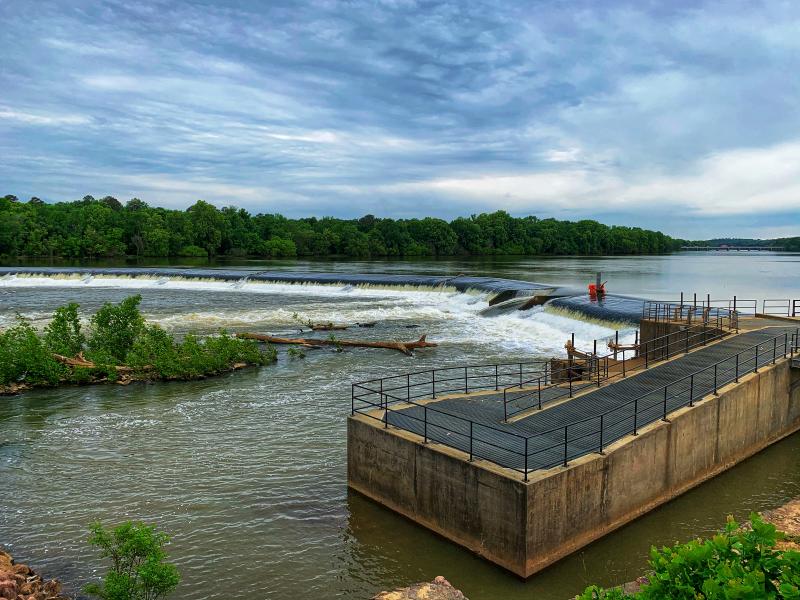A record number of fish swam through the Columbia Fishway in the Broad River in South Carolina this spring. Monitoring efforts estimate more than 5,000 American shad passed through the fishway. This shows that fish are successfully passing multiple barriers in their yearly journey up the river to spawn.
The Columbia Diversion Dam is used to divert the flow of the Broad River toward the canal of the Columbia Hydroelectric Project located downstream. The dam blocks the migration of fish, including several commercially important fish species, from reaching their important spawning habitat upstream. The Columbia Fishway is a vertical slot ladder that enables fish to swim over a series of low steps and into the waters on the other side of the dam.
In October 2015, a major flood event in the city of Columbia breached the canal and caused an outage at the hydroelectric facility that continues today. The number of passing fish drastically declined in the years immediately following the flood—and we don’t yet know why. The impacts of the non-operational hydroelectric facility on downstream fish passage have yet to be determined. But the increasing number of fish returning through the fishway is promising.
The significant increase in this year’s monitoring numbers is a sign of successful upstream fish passage throughout the Broad River. Before reaching the Columbia Fishway, American shad must pass one of two other fishways located further downstream: the Pinopolis Navigation Lock or the St. Stephens Fish Lift. The new monitoring data suggests these fishways are aiding shad in their journey upstream, and are contributing to the continued success of the Columbia Fishway.
The fishway was constructed in 2006, as required by NOAA Fisheries and the U.S. Fish and Wildlife Service through the Federal Energy Regulatory Commission’s (FERC) relicensing of the Columbia Hydroelectric Project. This is the fifteenth year of monitoring migratory and resident fish passage at the fishway, which takes place each spring over a 10-week period. The monitoring efforts were coordinated by the City of Columbia and the Lockhart Power Company, which operates the hydroelectric facility. NOAA Fisheries staff reviewed the preliminary monitoring results to document upstream movements of American shad and blueback herring to their spawning habitats upstream of the dam.
Following additional analysis of the 2021 estimates, the final monitoring report for the Columbia Fishway will be filed with FERC in January 2022. NOAA Fisheries will continue to coordinate with the city of Columbia on fish passage efforts. We will also coordinate with the Federal Emergency Management Agency on consultations and requests associated with the rehabilitation of the Columbia Hydroelectric Project.




